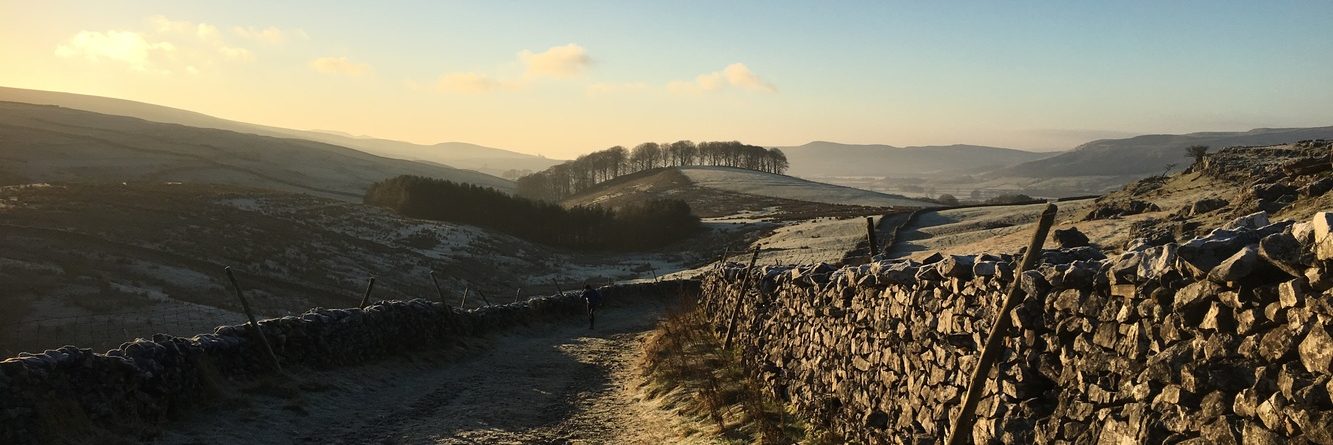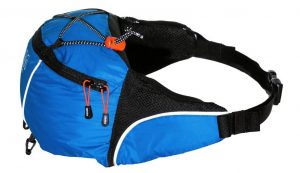Some days I have a plan about what will appear in the blog posts. Other times, it’ll be influenced by something that has cropped up during the day. Today’s theme is safety, and very much based upon today’s run.
Today’s Run – safety in mind
I knew I had a lot to fit in today, so decided that I would get the run done first. I didn’t want to reach the end of the day having not put my trainers on! It was only going to be a 5k recovery run; I did a longer route yesterday and the weekend has a good few miles planned already. So despite the icy conditions I went for a run around the estate nearby. Here’s the route:
I was heading back in when I saw a number of people stood in the middle of a road junction. I could see someone lying down in the road. It turns out the old boy had taken a tumble on the ice and knocked himself out momentarily. By the time I had got there the ambulance service were on the phone getting the details and passers by were donating blankets, cushions, hot water bottles and more. The old boy was in good spirits albeit a little shaken, but we were just waiting on the ambulance people to get over to him so he could be moved safely.
I was only in a t-shirt and running shorts and after about 20 minutes, seeing that there was plenty of support in place, I dashed off to get some warmer clothes. It was this whole experience which got me thinking about what I wanted to write about today.
Your safety is your responsibility

Although I started my running on the roads, I run increasingly off-road these days. When you’re away from immediate help, you have to take safety even more seriously. The weather may change, you may get injured etc. For these reasons, many FRA races require all runners to bring a minimum level of kit. This might seem a bit of a drag when the weather looks fine, but equally this kit may just save a life in some circumstances.
And whilst a lot of the kit might seem a little overkill to the casual road-runner, the situation today (where I ended up stood around for 20 minutes unexpectedly) shows it can happen any time, any where.
So I thought it worth running through a few kit items that it’s worth having to hand; definitely if you’re off-road, and worth thinking about even on a road run.
A non-exhaustive list of useful kit
- Mobile Phone
- Waterproof Top
- Waterproof Trousers
- An extra layer
- Head torch / hand torch
- Hat
- Gloves
- Space Blanket
- Money
- Compass
- Map
- Whistle
- Snack
- Water container
At first glance some of these may seem over the top.
What I would suggest is that you think about the type of run you are doing.
-
- Where is it you are going?
- How long are you planning on being out?
- What is the weather like. Have you seen a forecast?
- Who are you with?
- Who knows that you’re out?
- How long are you planning on being out for?
At the core this is simple risk-assessing. What you want to be doing is looking at each risk and deciding how serious it is, and what you can do to mitigate it, Hardly rocket science.
Anything on the lists I’ve missed that you think should be included? Let me know!
Mobile Phone
A Mobile Phone is useful to have. Assuming you have a signal (a big assumption!), it enables you to let others know if you are delayed, or if there is a problem. At the very least you ought to have let someone know of your plans before you went off. That way if there was a problem, at least you’d be missed sooner rather than later. Yes, it seems to be a ‘trail/fell running issue’ but in the darker winter days, running along the side of the road can be just as hazardous. It just takes a distracted driver to cause you to end up in a ditch and there’s a problem!
Appropriate clothing
Appropriate clothing is more an issue for off-road running but it’s not exclusive. The problem when out on the hills is that if the weather deteriorates before you can get back to shelter, you want some way to keep yourself as dry and warm as possible. Hence the need for an extra layer of warmth, plus gloves and hat, plus waterproofs.
Whilst running along the roadside, this may seem overkill. Not least because the chances of being stranded out of the way of civilisation are that much lower. However warm you are when you are running though, should you need to stop e.g. in the circumstances I described above, or if it was you that fell and hurt yourself, you will cool down quickly. It’s a judgment call. My run today didn’t take me far from home. When at the point I began to feel the cold, I was only a couple of minutes from a woolly jumper so it was not an issue. However had it been me that had slipped, that avenue might not have been quite so convenient or possible.
Carrying a space blanket may be an option if you’ve got one. They’re small to pack and weigh very little.
Money
I’ve added ‘Money’ to the list for this reason. Say you’re doing a 10 mile run, 5 miles out and then back. At the furthest point you twist an ankle and can no longer run. How are you going to get back? Mobile phone to call for help? Money for a bus/taxi? A variety of options available assuming you have those items with you.
Trail-kit
The other items on the list are more likely to be beneficial when running off-road and away from immediate help. Having a means of navigation is vital e.g. compass & map; as I described in #REDBED Day 11, you can’t guarantee that tech will help you out here. Even with a good mobile signal (I still don’t understand why it was so far out from my known position)!! Generally if you’re running along roads, you’ll likely be less able to get badly lost. But it’s not impossible! Similarly a whistle is useful to attract attention to help others find your location. More an off-road tool, but with many running bags coming with a basic whistle built in, it’s worth knowing about it!
Food & water again generally more an issue for running away from built up areas. Regardless of this, if you’re planning on being out for any length of time, you need to factor in fueling yourself. On hot days, dehydration can be a major problem, so making sure you have adequate water is important regardless of where you’re running.
How much to carry?
If this seems like a lot of stuff to carry around, it really isn’t. As I mentioned earlier, much of this kit is part of the minimum required kit for fell-races. Most, if not all, will fit into a waist pouch or small rucksack. And you’ve more than likely already got most of the kit lying around at home!
Wrapping up. Metaphorically and literally!
Today’s experience, albeit minor from my point of view, highlighted how quickly a situation can change. And that was during a small local road run, rather than anything remote or adventurous.
So a final question or two: Do you think about the kit you might need before you go out? Or does the level of your checks extend only as far as whether you’ve got your music play-list and GPS watch with you?




Be the first to comment on "Are you safety conscious? #REDBED Day 15"